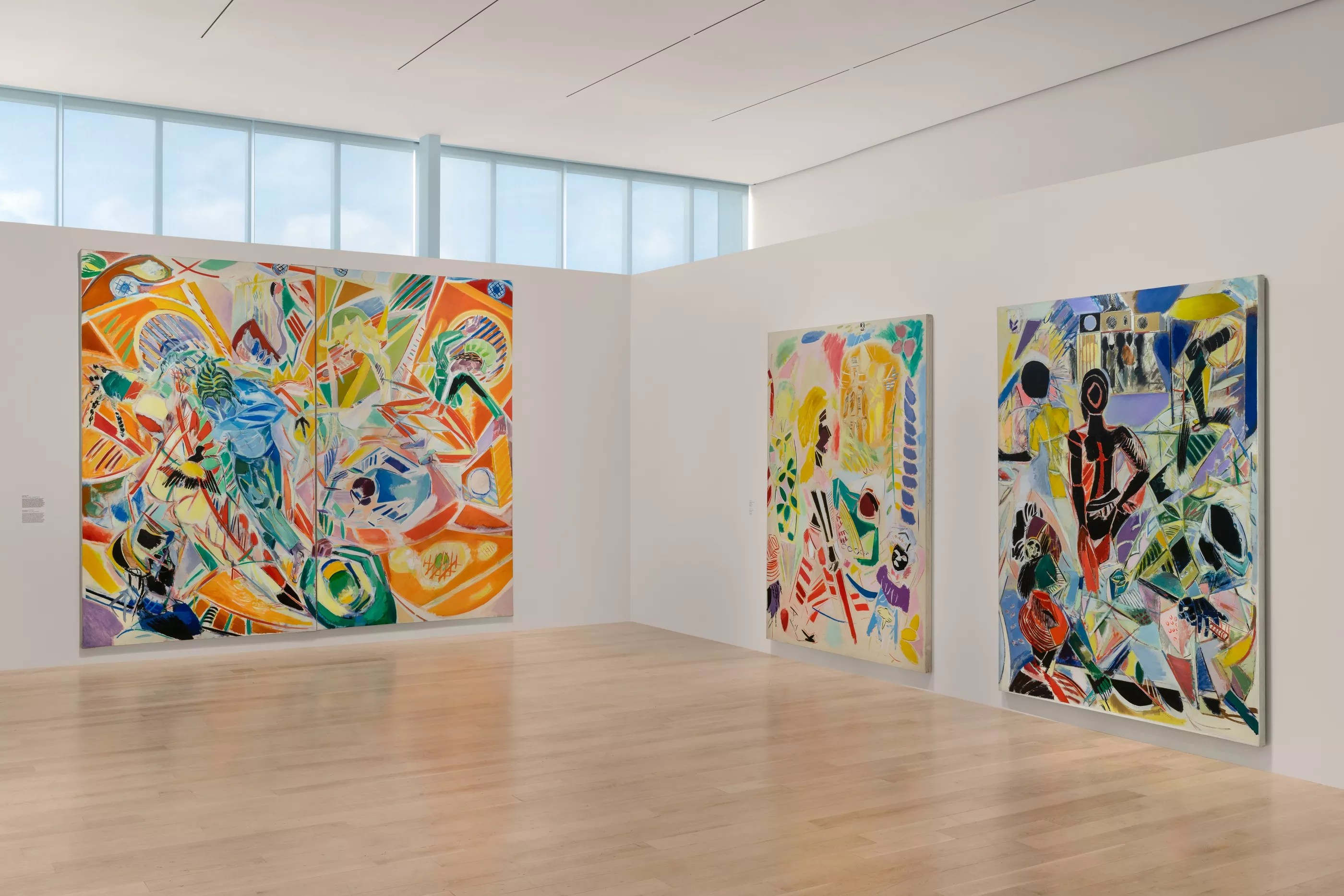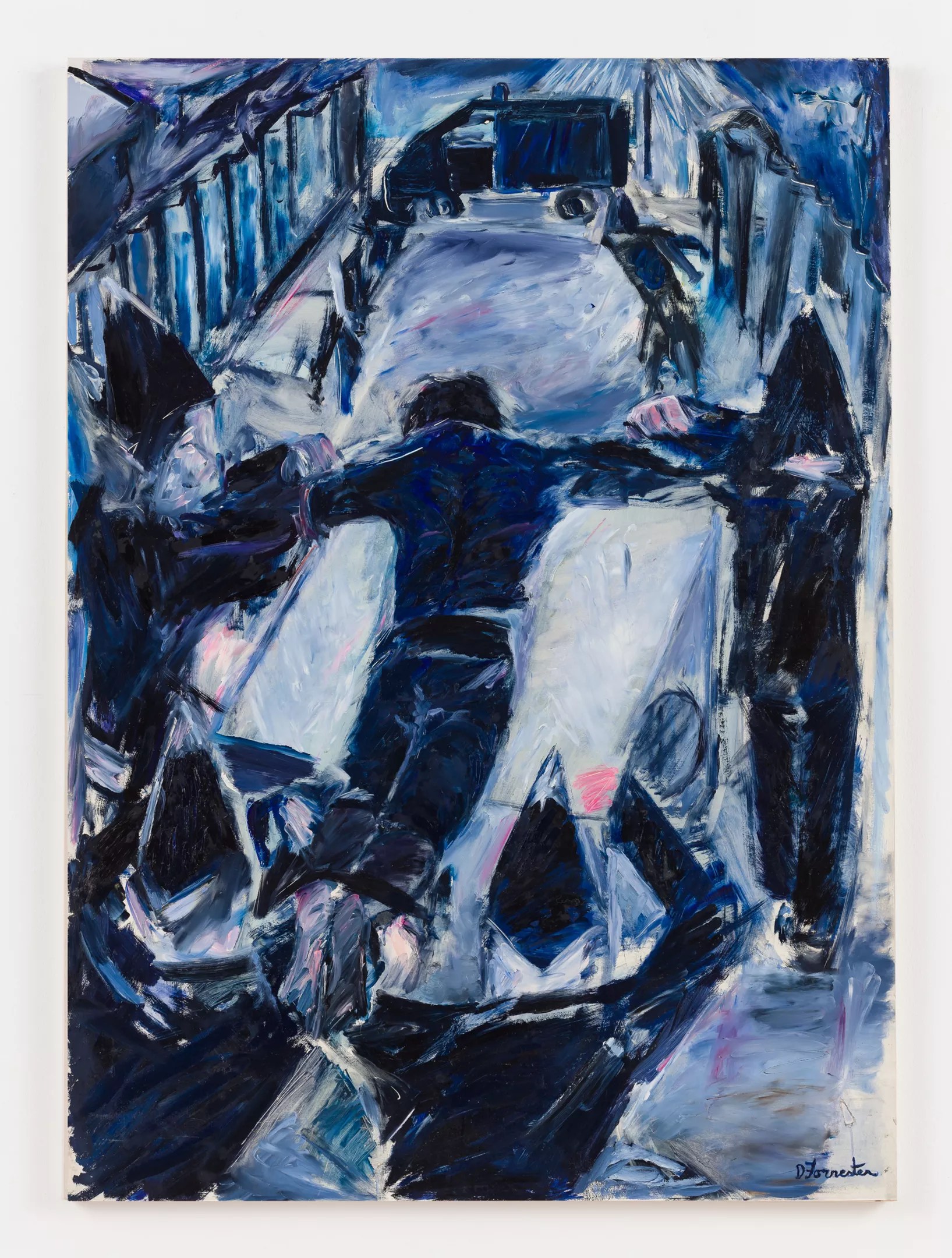
Photo by Mark Blower/Courtesy of Institute of Contemporary Art, Miami.

Audio By Carbonatix
Guiding visitors through the duality of growing up as a Caribbean transplant in the 1970s and ’80s in London is the Institute of Contemporary Art, Miami’s latest exhibition, “Denzil Forrester: We Culture.” Born in Grenada, Forrester moved as a 10-year-old to London during the so-called Windrush generation, which saw a massive migration from the Caribbean Commonwealth.
Answering the call to rebuild the United Kingdom following the devastation of World War II, Caribbean migrants arrived in droves in Britain between 1948 and the early 1970s, commencing with a crossing of nearly 500 passengers on the SS Empire Windrush. The dirtiest of labor and service occupations were assigned to the group – along with racial hostility and an inability to assimilate into British culture.
As is the case with many new migrant groups, the Windrush generation also brought with it its culture, including music and style combinations. What once stayed in the halls and intimate spaces of community centers and single-family household basements soon spilled into London’s nightclub scene during the 1970s and ’80s. After completing his studies at the Central School of Art & Design and the Royal College of Art, Forrester often found himself observing the city’s nightlife scene.
Prepared with a block of sketchpad paper and a seat at his pseudo-residency behind the transparent bar partition, Forrester etched the instant fleetingness of a dub club into the semi-permanence of a charcoal and oil pastel work on paper. Nightclubs and late-night establishments such as Phebes in East London and All Nations in Hackney became immortalized through the artist’s careful eye. Later transferring these gestural sketches to the large-scale comfort of a canvas, Forrester sifted through the forgotten elements of the night now teeming from the paper and magnified them to permanence in ten-foot-tall paintings.
Will you step up to support New Times this year?
At New Times, we’re small and scrappy — and we make the most of every dollar from our supporters. Right now, we’re $18,000 away from reaching our December 31 goal of $30,000. If you’ve ever learned something new, stayed informed, or felt more connected because of New Times, now’s the time to give back.
“He wasn’t really interested in faithfully reproducing the scene,” says Gean Moreno, the exhibition’s curator and director of the museum’s Knight Foundation Art + Research Center. “He just wanted to get the vibe of everyone dancing and the kind of clothes they’re wearing, the music pumping in the basslines, and somehow finding a way to transcribe that into graphic marks. It’s quite a bit of formal sophistication in putting all this together. I think one of the things that the paintings attempt to do is to also kind of give you that energy of the club. They are almost performative, like they want you to feel it as much as look at it in the composition.”

Installation view of “Denzil Forrester: We Culture” at the Institute of Contemporary Art, Miami
Photo by Zachary Balber/Courtesy of Institute of Contemporary Art, Miami.
Balancing on the edges of the stained glass-etched lightness in his artworks – a visual effect traced back to Forrester’s childhood experience of being in an Anglican church in Granada – is the darkness of a nonreciprocal relationship between Black Caribbean youth and London’s authorities. Depicted in works such as Death Walk (1983) and Three Wicked Men (1982) is the tenacious proximity in which Forrester found himself regarding the unlawful death of Winston Rose in 1981 while in police custody.
As a former childhood friend and downstairs neighbor of Rose growing up, Forrester was deeply impacted by the publicized news of Rose’s death at the hands of London police, and it provoked the artist’s personal investigation of the incident. Attending hearings held at Waltham Forest Magistrates Court over several months, Forrester documented it as part of his thesis at the Royal College of Art. The disturbing nature of violent police action taken on Rose, who exhibited mentally ill health behavior, was a sadly all-too-familiar story that Forrester soon conveyed in many of the works produced during the first seven years of his artistic career.
Reimagining Rose’s funeral as a dub club, what was once the heart of a loved one becomes the spinning record from which the DJ turns music into a moment to honor and celebrate a life lost unjustly in Funeral of Winston Rose (1981). There’s a palpable humor in the work, as exemplified in the depiction of crocodiles in the title semblance of Three Wicked Crocs (1982), a moment of emotional relief for Forrester in visiting the London Zoo in the middle of Rose’s judicial hearings. Watching closely in the peripheries of many of the painted nightclub scenes are the cautious eyes of the police, speaking volumes about how safe spaces carved out by BIPOC youth in cities are never as safe as they seem when under the vigilance of a racially charged authority.

Denzil Forrester’s Death Walk
Photo by Mark Blower/Courtesy of Institute of Contemporary Art, Miami
Much of reggae-dub culture abounded in London’s nightclub scene and into the international pipeline of future drum ‘n’ bass and jungle styles of music, with prominent DJs like Jah Shaka finding themselves as recurring characters in Forrester’s practice. Following his sets on back-to-back weekends, Forrester’s portrayals of the lasting influence of the West Indies on a Western empire demonstrate the grief of acknowledging how cities such as London – and Miami, by extension – were and are built on the backs of Caribbean people.
When asked about the exhibition’s title, Forrester attributes it to a hand-carved mahogany sculpture he acquired from a Grenadian artist named Wayne Snagg.
“On the bottom of the work were the scrawled words ‘We Culture’ by the now deceased Snagg,” he says. “I had turned it over in a moment of curiosity and realized how reflective the phrase is of the West Indies and the lived experience we carry between us as a people in keeping our legacies alive.”
Much like Rose and Shaka, Forrester echoes the voices of those long gone and removed from their peak in popularity – maintaining the verity that we are constantly inspired by what’s already been created. Nothing is as original as it seems.
“Denzil Forrester: We Culture” On view through September 24, at Institute of Contemporary Art, Miami, 61 NE 41st St., Miami; 305-901-5272; icamiami.org. Admission is free. Wednesday through Sunday 11 a.m. to 6 p.m.